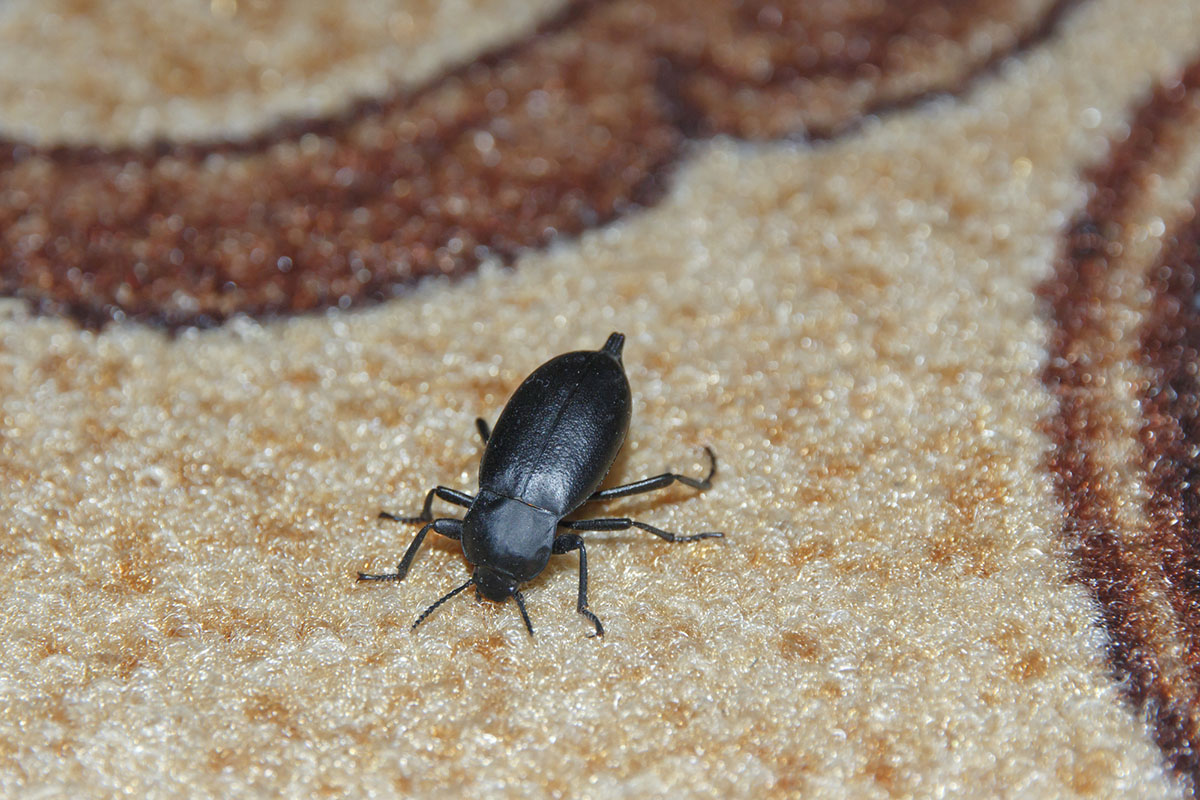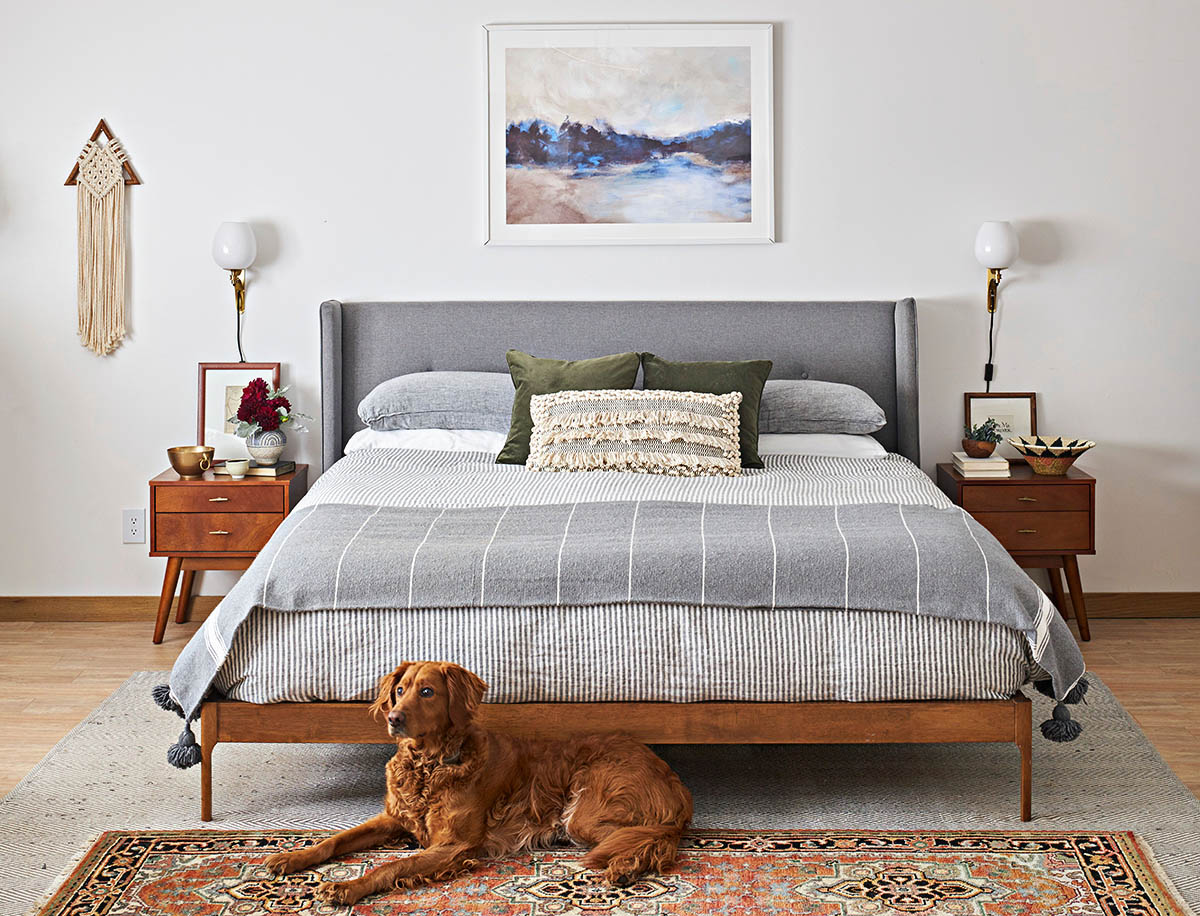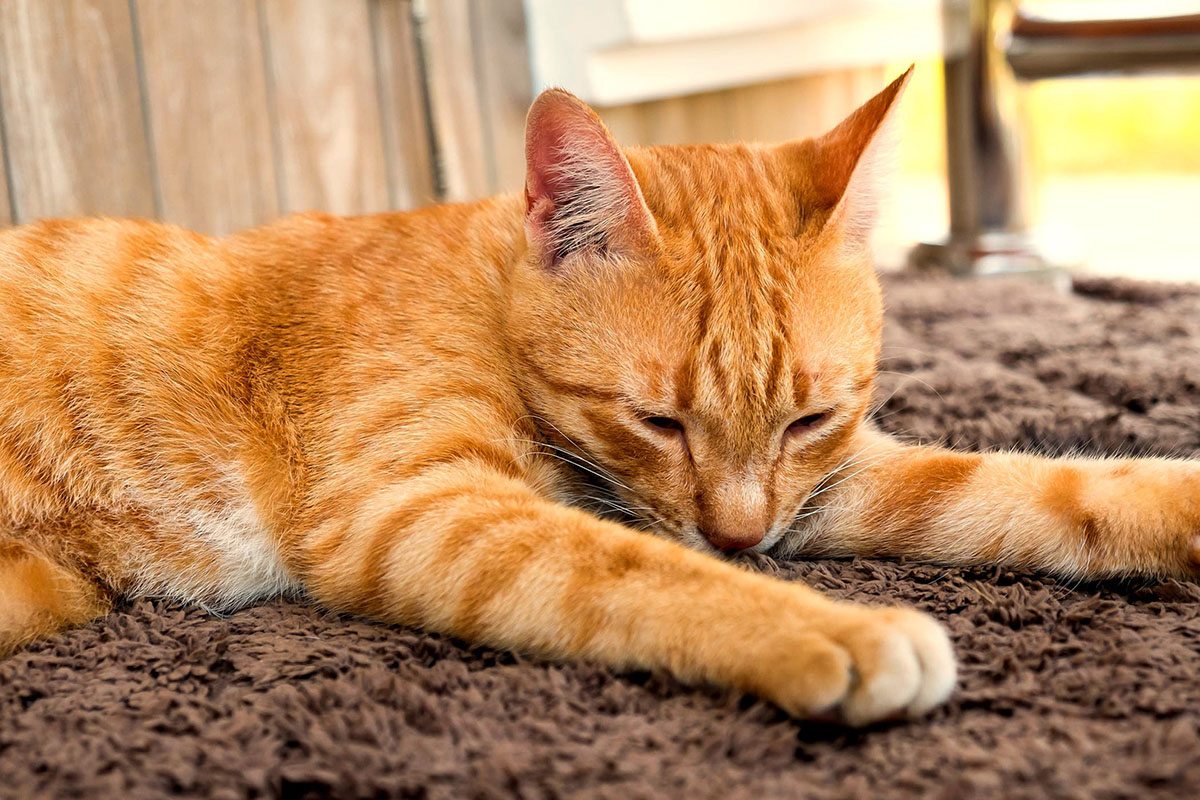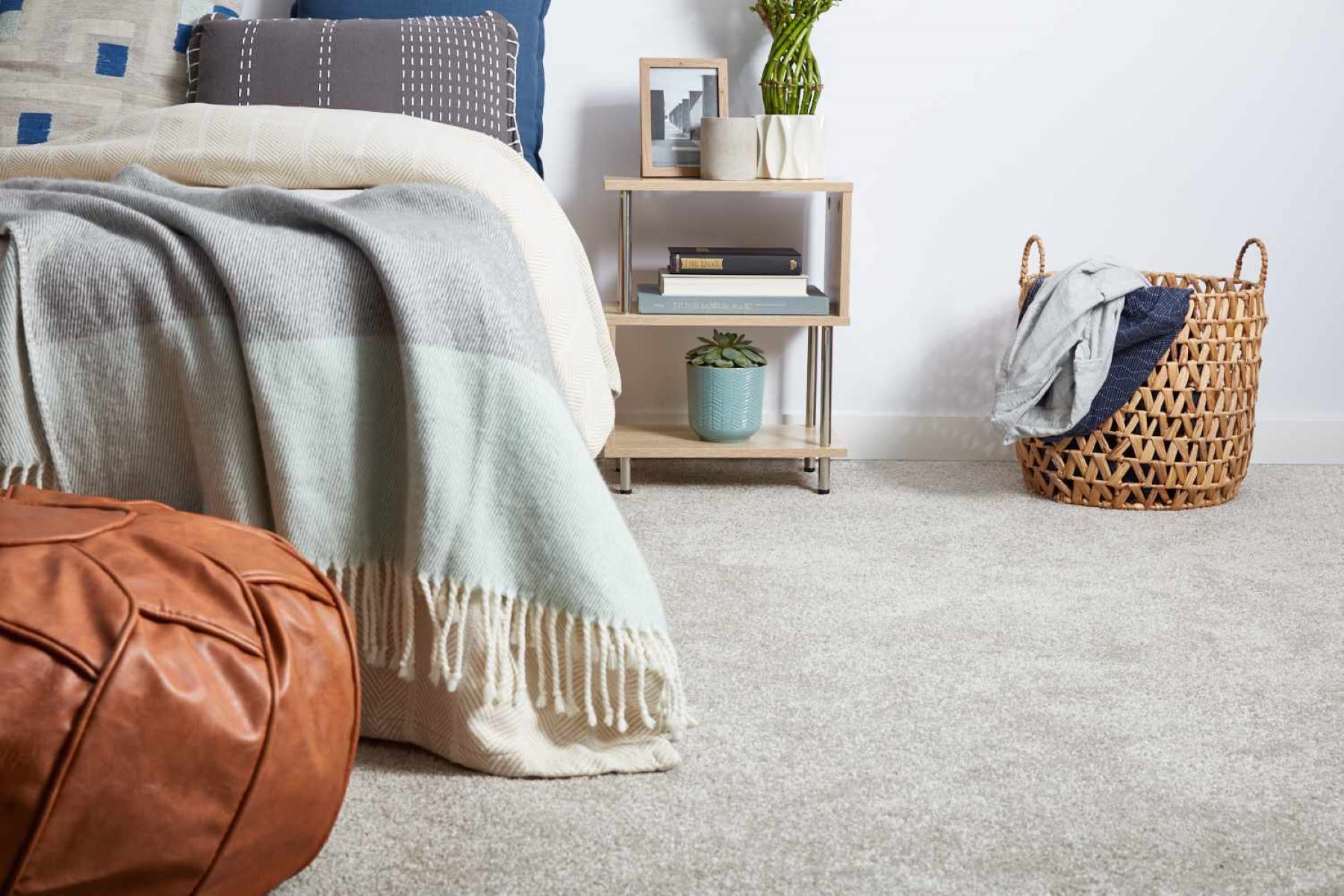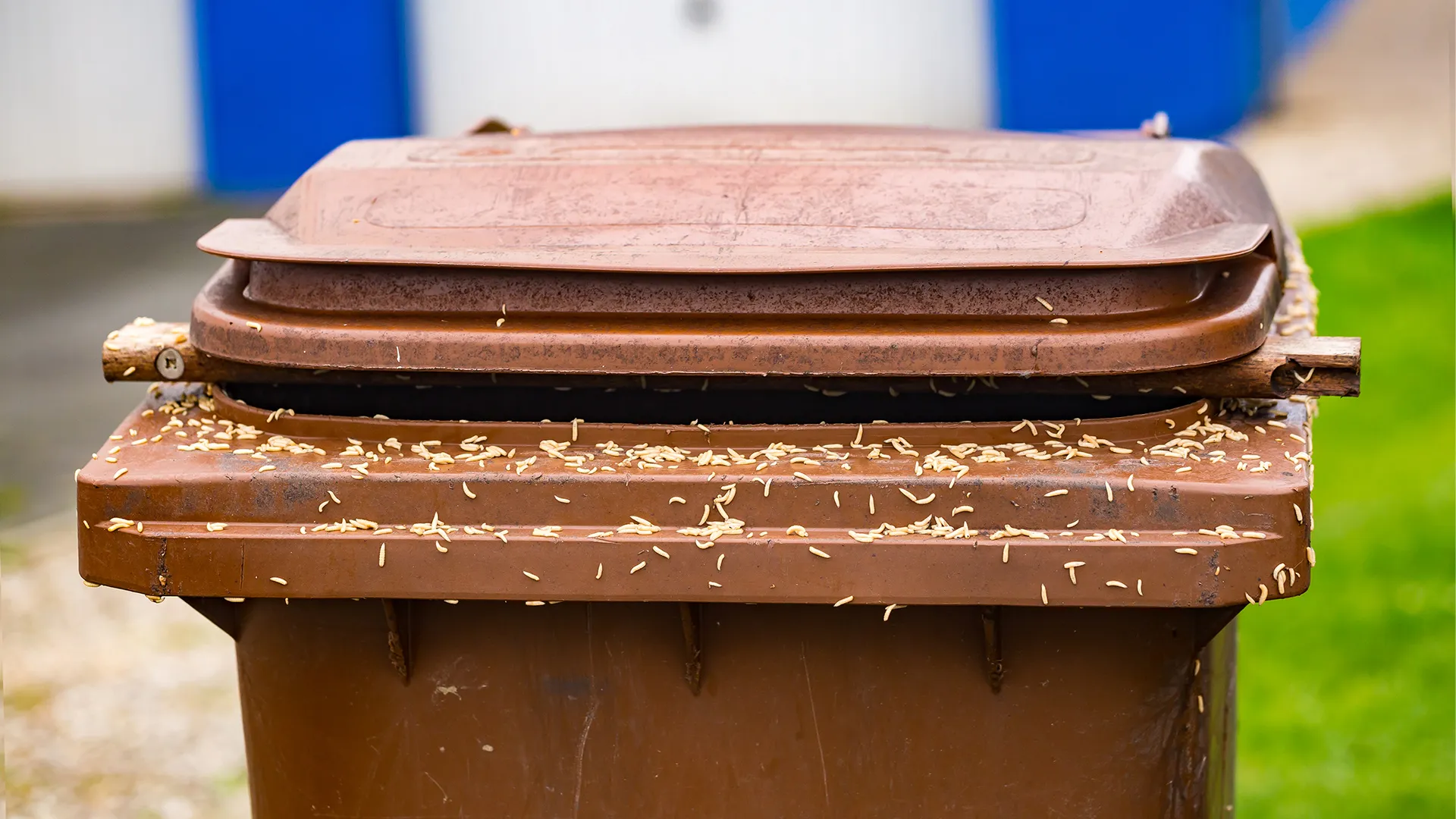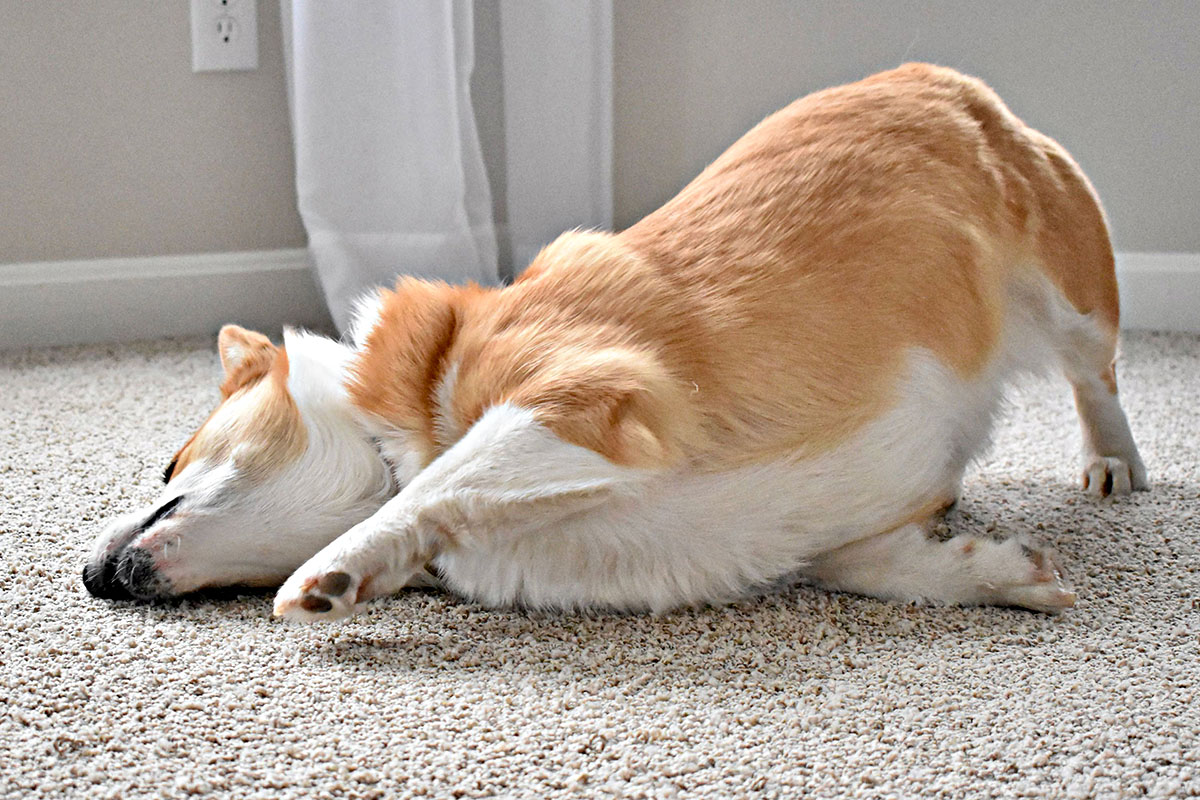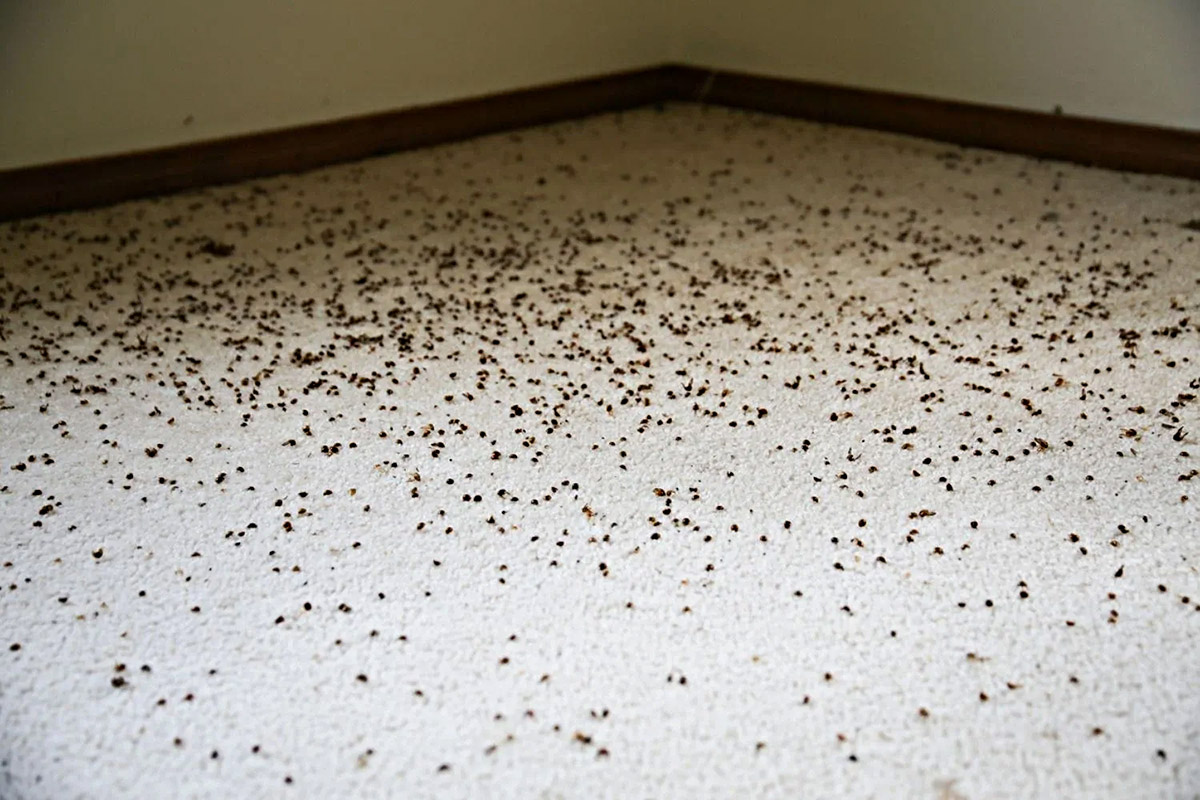

Articles
Why Do Carpet Beetles Infest Bedrooms
Modified: May 6, 2024
Discover the reason why carpet beetles commonly infest bedrooms. Read informative articles on how to prevent and eradicate these pests for a cleaner and healthier living space.
(Many of the links in this article redirect to a specific reviewed product. Your purchase of these products through affiliate links helps to generate commission for Storables.com, at no extra cost. Learn more)
Introduction
Carpet beetles are small pests that can wreak havoc on the cleanliness and comfort of your home, particularly in bedrooms. These tiny insects, ranging in size from 1/8 to 1/4 inch, may seem harmless at first glance, but they can cause significant damage to carpets, clothing, upholstery, and other fabrics.
In this article, we will explore the various types of carpet beetles, delve into the reasons behind their infestations in bedrooms, identify the attractants that make bedrooms a prime target for these pests, discuss common signs of infestation, and provide helpful tips for preventing and controlling carpet beetle infestations in bedrooms.
Understanding carpet beetles and their behaviors is essential for effectively dealing with these unwelcome visitors. By recognizing the signs of infestation and implementing preventative measures, you can safeguard your living space and keep your bedrooms free from carpet beetle damage.
So, let’s dive into the world of carpet beetles and explore why they infiltrate our bedrooms.
Key Takeaways:
- Understanding the reasons behind carpet beetle infestations in bedrooms, such as food sources, warmth, and hidden spaces, is crucial for effective pest management and safeguarding your living space.
- By being aware of the attractants for carpet beetles in bedrooms, such as natural fibers, dust, and pet hair, and implementing preventative measures, you can reduce the risk of infestations and protect your belongings from damage.
Read more: What Causes Carpet Beetles
Types of Carpet Beetles
Carpet beetles belong to the family Dermestidae and are commonly found worldwide. There are three primary species of carpet beetles that are known to infest homes: the varied carpet beetle (Anthrenus verbasci), the black carpet beetle (Attagenus unicolor), and the furniture carpet beetle (Anthrenus flavipes).
The varied carpet beetle is the most common species encountered in households. It is small and oval-shaped, with a pattern of yellow, white, and black scales on its back. The larvae of the varied carpet beetle are particularly destructive, eating through a wide range of organic materials, including carpets, clothing, upholstery, and even animal specimens.
The black carpet beetle, as the name suggests, is dark brown to black in color and has a slightly larger size compared to the varied carpet beetle. Its larvae are equally damaging, feeding on carpets, rugs, and other fabric materials. The black carpet beetle is also attracted to natural fibers and can be found in bird or rodent nests.
The furniture carpet beetle closely resembles the varied carpet beetle in appearance but is slightly smaller. Its larvae feed on natural fibers such as wool, silk, feathers, and even human hair. They are commonly found in upholstered furniture, bedding, and clothing, leading to extensive damage if left unchecked.
It is important to identify the specific type of carpet beetle infestation in your bedroom to effectively target control and prevention methods. Being aware of the characteristics and habits of these insects can help in implementing appropriate measures to eradicate them and protect your belongings.
Reasons for Carpet Beetle Infestations in Bedrooms
Bedrooms provide an ideal environment for carpet beetles to thrive and reproduce. There are several reasons why these pests are drawn to infest bedrooms:
- Food Source: Carpet beetle larvae feed on natural fibers, including wool, silk, cotton, and fur. Bedrooms often contain a variety of these materials in the form of carpets, rugs, curtains, bedding, and clothing. The presence of these food sources attracts carpet beetles and encourages infestation.
- Warmth and Humidity: Bedrooms typically provide a stable and comfortable climate for carpet beetles. They prefer warm and humid environments, and bedrooms often have controlled temperatures and moisture levels that are conducive to their survival and reproduction.
- Hidden Nooks and Crannies: Bedrooms are often furnished with upholstery, mattresses, and other furniture that provide numerous hiding spots and crevices for carpet beetles to reside in. These nooks and crannies offer protection and make it difficult to detect and eliminate an infestation.
- Easy Access: Carpet beetles can enter bedrooms through various entry points, such as open windows, vents, and cracks in walls. Once inside, they can quickly spread and infest different areas of the room.
- Pets and Wildlife: Pets, including dogs and cats, can inadvertently introduce carpet beetles into the bedroom if they have come into contact with these insects outdoors. Additionally, if there are birds or rodents nesting in or around the bedroom, they can serve as a source of carpet beetles and attract infestations.
Understanding the reasons behind carpet beetle infestations in bedrooms is crucial for effective pest management. By addressing these factors and implementing preventative measures, you can minimize the risk of infestation and protect your bedroom and belongings from damage.
Attractants for Carpet Beetles in Bedrooms
Carpet beetles are attracted to certain elements and conditions that are commonly found in bedrooms. By identifying these attractants, you can take proactive measures to minimize the risk of infestation. Here are some common attractants for carpet beetles in bedrooms:
- Natural Fibers: Carpet beetles are particularly drawn to natural fibers such as wool, silk, cotton, and fur. These materials are commonly found in carpets, rugs, bedding, curtains, and clothing in bedrooms. The presence of these natural fibers provides a tempting food source for carpet beetle larvae.
- Accumulated Dust and Lint: Dust, lint, and debris can accumulate in bedrooms, especially in areas that are rarely cleaned or hard to reach. Carpet beetles can find shelter and feed on organic matter trapped in dust and lint, exacerbating the infestation.
- Pollen and Dead Insects: Carpet beetles are known to feed on pollen and dead insects. If there are sources of pollen or dead insects in your bedroom, such as flowers, plants, or open windows, it can attract carpet beetles and contribute to infestations.
- Pet Hair and Dander: If you have pets that spend time in your bedroom, their hair and dander can attract carpet beetles. Pet hair contains keratin, a protein that carpet beetle larvae feed on, making it an enticing food source for them.
- Stagnant Air and High Humidity: Carpet beetles thrive in warm and humid environments. Poor ventilation, stagnant air, and high humidity levels in bedrooms can create the perfect breeding conditions for these pests.
To minimize the attractants for carpet beetles, it’s important to regularly clean and vacuum your bedroom, paying attention to areas where dust, lint, and debris may accumulate. Regularly washing bedding, curtains, and clothing can also help prevent infestations. Additionally, maintaining proper ventilation and reducing humidity levels in your bedroom can make it less appealing for carpet beetles.
By being aware of these attractants and implementing preventative measures, you can reduce the risk of carpet beetle infestations in your bedroom and protect your belongings from damage.
Regular vacuuming and cleaning of carpets, rugs, and upholstery can help prevent carpet beetle infestations in bedrooms. Pay special attention to areas under furniture and along baseboards where debris can accumulate.
Signs of Carpet Beetle Infestations in Bedrooms
Identifying the signs of a carpet beetle infestation in your bedroom is crucial for taking prompt action to prevent further damage. Here are some common signs to lookout for:
- Visible Adult Beetles: Spotting adult carpet beetles in your bedroom is a clear indication of an infestation. These beetles are small, typically ranging from 1/8 to 1/4 inch in size. They can be found crawling on walls, floors, or any surface where they may be searching for a food source or a mate.
- Larval Shed Skins: Carpet beetle larvae molt several times as they grow. The shed skins, which resemble tiny brown or black casings, can often be found in areas where the larvae are active, such as beneath carpets, on window sills, or in closets.
- Visible Larvae: The larvae of carpet beetles are elongated, segmented, and covered in small, bristly hairs. They are typically reddish-brown to dark brown in color. Spotting these larvae in your bedroom, especially on fabrics or in dark and hidden spots, is a definite sign of infestation.
- Damage to Fabrics: Carpet beetle larvae feed on natural fibers, leaving behind noticeable damage. Look for irregular holes or areas of thinning in carpets, rugs, upholstery, bedding, and clothing. They may also eat through stored items such as blankets, linens, and stuffed animals.
- Powdery Residue: As carpet beetle larvae feed, they produce a powdery residue known as frass. This residue consists of feces and partially digested fibers. Discovering this powdery substance on surfaces, such as window ledges, can indicate the presence of carpet beetle larvae.
- Presence of Fecal Pellets: Carpet beetle larvae excrete tiny fecal pellets that resemble small, bristly hairs. These pellets can accumulate near feeding sites or in areas where the larvae reside, such as corners, crevices, or along baseboards.
If you notice any of these signs in your bedroom, it is crucial to take immediate action to address the infestation. Removing and properly disposing of infested items, thoroughly cleaning and vacuuming the affected areas, and considering professional pest control services can help eliminate the carpet beetle infestation and prevent further damage to your bedroom and belongings.
By regularly inspecting your bedroom and being vigilant for these signs, you can catch a carpet beetle infestation early on and minimize the potential harm caused by these pests.
Read more: How Do You Get Rid Of Carpet Beetles
Preventing and Controlling Carpet Beetle Infestations in Bedrooms
Prevention is key when it comes to dealing with carpet beetle infestations in bedrooms. By implementing the following measures, you can reduce the risk of carpet beetles finding their way into your living space and minimize their impact:
- Regular Cleaning: Vacuum your bedroom regularly, paying close attention to carpets, rugs, upholstery, and curtains. Be sure to vacuum along baseboards, in corners, and underneath furniture where carpet beetles and their larvae may hide.
- Proper Storage: When storing clothing and textiles, make sure they are clean and dry before placing them in airtight containers or vacuum-sealed bags. This prevents carpet beetles from accessing these items and prevents infestation.
- Reduce Clutter: Minimize clutter in your bedroom, as it provides hiding places for carpet beetles. Decluttering makes it easier to detect and eliminate any infestations.
- Seal Entry Points: Inspect windows, doors, and other potential entry points for gaps, cracks, or openings that carpet beetles can use to gain access to your bedroom. Seal any openings to prevent their entry.
- Monitor Pet Bedding: Regularly wash and clean pet bedding to remove any potential sources of carpet beetles. Inspect the bedding for signs of infestation and keep it clean and well-maintained.
- Pest Control Treatment: Consider professional pest control services to treat your bedroom and eliminate any existing carpet beetle infestation. Pest control experts have specialized knowledge and products to effectively eradicate these pests.
- Natural Remedies: There are several natural remedies you can try to repel carpet beetles, such as using cedar chips, lavender sachets, or herbal repellents. These can help deter carpet beetles from entering your bedroom.
By implementing these prevention and control measures, you can significantly reduce the likelihood of a carpet beetle infestation in your bedroom. However, if you do notice signs of an infestation despite taking preventive measures, it is important to act quickly and consider contacting a professional pest control service for thorough treatment.
Remember, early detection and proactive measures are key to preventing extensive damage and protecting your bedroom from the destructive effects of carpet beetles.
Conclusion
Carpet beetle infestations in bedrooms can be a frustrating and damaging problem. However, by understanding the types of carpet beetles, the reasons behind their infestations in bedrooms, the attractants that make bedrooms a prime target, the signs of infestation, and the preventative and control measures, you can effectively manage these pests and protect your living space.
Identifying the signs of carpet beetle infestations early on, such as spotting adult beetles, larvae, or damage to fabrics, allows you to take prompt action and prevent further damage. Regular cleaning, proper storage of textiles, reducing clutter, sealing entry points, monitoring pet bedding, and seeking professional pest control treatment when necessary are all important steps in preventing and controlling carpet beetle infestations.
Remember, prevention is key when it comes to dealing with carpet beetles. By implementing preventative measures and maintaining a clean and well-maintained bedroom, you can significantly reduce the risk of infestations and protect your belongings from damage.
Ultimately, staying vigilant, taking proactive steps, and addressing any signs of infestation promptly will help you keep your bedrooms free from carpet beetle infestations and maintain a comfortable and pest-free living environment.
After tackling carpet beetle issues in bedrooms, why stop there? Your home deserves to be pest-free, and we've got just the insights you need. If pantry moths are your next challenge, our experts share effective strategies that kick them to the curb. Or maybe, you're dealing with cockroaches and prefer a gentler approach? Dive into our remedies that keep these unwelcome guests out, ensuring a cleaner, healthier environment for you and your family.
Frequently Asked Questions about Why Do Carpet Beetles Infest Bedrooms
Was this page helpful?
At Storables.com, we guarantee accurate and reliable information. Our content, validated by Expert Board Contributors, is crafted following stringent Editorial Policies. We're committed to providing you with well-researched, expert-backed insights for all your informational needs.
